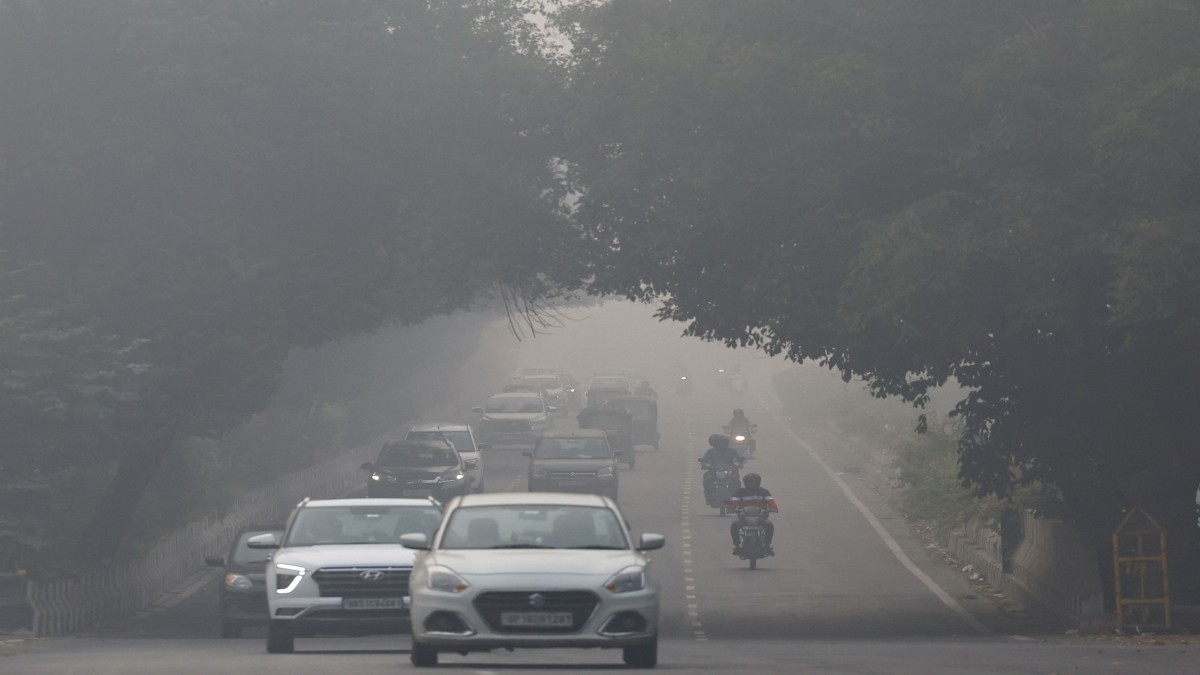For days, Delhi and the surrounding areas have been shrouded in thick smog.
This week as winter sets in, Delhi’s air quality dropped to the “severe” category, with many areas having an index of over 400.
The alarming levels of AQI has prompted the Commission for Air Quality Management (CAQM) to activate stage III of the Graded Action Response Plan (GRAP) in the National Capital.
What is GRAP?
GRAP is a set of emergency measures to be taken to prevent air quality deterioration after reaching a certain threshold.
The system operates in four stages:
Stage I (AQI 201-300): Includes actions like strict restrictions on polluting vehicles, dust mitigation at building sites, and automated road cleaning.
Stage II (AQI 301-400): Better road sweeping, focused reduction of air pollution, and more public transportation services.
Stage III (AQI 401-450): More stringent pollution control measures, such as ban on non-essential construction, demolition work, and intensified road sweeping.
Stage IV (AQI > 450): Severe limitations such as stopping truck traffic, banning construction of public infrastructure, and lowering office attendance to 50 per cent.
The first GRAP activation took place in Delhi in October, when the air quality exceeded the 300 mark.
While earlier initiatives have prevented some pollution, more drastic measures are required now that the AQI is in the ‘severe’ category.
What’s banned in GRAP III?
All non-essential construction and demolition work is banned under GRAP Stage III. However, there are exceptions for projects critical to national security, healthcare, and certain public infrastructure projects.
There is a ban on the operation of BS-III petrol and BC-IV diesel four-wheelers in Delhi and parts of the NCR like Gurugram, Faridabad, Ghaziabad, and Noida.
Disesel-operated Medium Goods Vehicles (MGCs) of BS-III standards or below, except those carrying essential commodities/providing essential services in Delhi.
There’s a ban on interstate buses entering Delhi from NCR.
All mining and associated activities in the entire National Capital region.
Operations of stone crushers across NCR.
Major welding and gas cutting operations are also not permitted.
Painting, polishing, and varnishing works, etc., along with works of cement, plaster, and other coatings are not allowed.
Movement of vehicles carrying construction materials on unpaved roads is also banned.
Impact Shorts
More ShortsIndustrial operations not running on fuels in the standard list of approved ones are banned.
What’s permitted?
Some construction and demolition activities are allowed under the categories of projects: railway services/railway stations, metro rail services and stations, airports and interstate bus terminals, national security/defence-related activities, and projects of national importance.
Construction activities under hospitals/health care facilities, linear public projects such as highways, roads, flyovers, overbridges, power transmission/distribution, pipelines, etc., sanitation projects, and ancillary activities, specific to and supplementing the above-noted categories of projects are also permitted.
For all construction projects in NCR, non-polluting/non-dust-generating activities such as plumbing works, electrical works, carpentry-related works, and interior furnishing, finishing, and decoration works (excluding painting, polishing and varnishing works etc) is permitted.
The use of diesel generator sets is allowed only for emergency purposes.
Minor welding activities for mechanical, electrical, and Plumbing works are permitted.
Meanwhile, other measures such as intensifying mechanised road sweeping and water sprinkling to suppress dust are also implemented. Increased use of public transport services is encouraged, promoting off-peak travel through differential rates.
Also read: _Delhi, Lahore, & Dhaka: Is South Asia becoming the world's ‘smog capital’?_
How bad is Delhi’s pollution?
New Delhi has a severe air quality level of 424, according to live rankings kept by Swiss group IQAir, the worst amongst global capitals. The city battles smog - a toxic mix of smoke and fog - every winter as cold air traps dust, emissions, and smoke from illegal farm fires.
The temperature also dropped to the lowest point of the season, with the New Delhi-Ridge region recording 11.2 degrees Celsius.
Yesterday, Delhi Environment Minister Gopal Rai said that the government will not be enforcing the GRAP's third phase at this time. However, the limitations were subsequently announced.
Rai had said that between October 12 to November 3, both regional and local sources had an impact on Delhi's pollution levels , citing statistics from the Centre for Environment and Science.
According to the data, local sources in Delhi accounted for 30.34 per cent of the pollution in the nation’s capital, while the neighbouring NCR and places outside of it produced 34.97 per cent.
Delhi Chief Minister also instructed primary schools to switch to online learning from Friday “until further directions” due to extreme air pollution.
Delhi flights faced delays, with tracking website Flightradar24 showing 88 per cent of departures and 54 per cent of arrivals were delayed as of Thursday afternoon due to smog.
Doctors have also advised people to avoid going out as severe air pollution not only affects physical health, but also mental wellbeing.
With inputs from agencies


)

)
)
)
)
)
)
)
)



